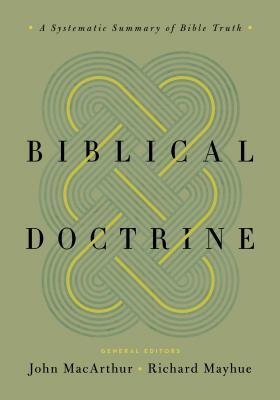Two words: thorough and scholarly
Is Biblical Doctrine a reference book? Yes! Is it only a reference book? No!
Is it a good one for pastors? Yes! Is it good only for pastors and above and beyond the realm of the laity? No. I think this one is for all of us--all believers, both men and women.
I would recommend reading this one slowly, with patience and diligence. I would also recommend rereading sections of this one as time allows for deeper study.
It is certainly possible to skim this one--to read at a 'normal' pace and grab hold of the big picture ideas. But I think a slower-more-deliberate pace where you allow yourself time to absorb the information and think about what you're reading would be better.
I think a few pages at a time--perhaps one sub-sub division at a time would be the best approach to this one. Perhaps read best with a cup of tea or coffee!
I do think this one would be a good one for church groups--for small groups--to tackle together, over the course of a year or two years.
There are ten chapters in this one.
- Introduction: Prolegomena
- God's Word: Bibliology
- God the Father: Theology Proper
- God the Son: Christology
- God the Holy Spirit: Pneumatology
- Man and Sin: Anthropology and Hamartiology
- Salvation: Soteriology
- Angels: Angelology
- The Church: Ecclesiology
- The Future: Eschatology
Each chapter has divisions and subdivisions and sub-sub-divisions. I would say it's definitely well-organized. For example, here is the outline for the fourth chapter, "God the Son":
I Preincarnate Christ
A Eternity Past
B Eternal Son of God
C Old Testament Appearances
D Old Testament Activities
E Old Testament Prophecies
II Incarnate Christ
A Incarnation
B Teachings
C Miracles
D Arrest and Trials
E Death and Atonement
F Resurrection and Ascension
III Glorified Christ
A Heavenly Intercessor
B Rapture
C Judgment Seat
D Second Coming
E Millennial Reign
F Great White Throne Judgment
G Eternity Future
This one is packed with information including hundreds of definitions. The insights and conclusions are drawn from Scripture. Here are the five principles used:
1. The literal principle. Scripture should be understood in its literal, natural, and normal sense. While the Bible does contain figures of speech and symbols, they are intended to convey literal truth. In general, however, the Bible speaks in literal terms and must be allowed to speak for itself.I enjoyed many of the chapters. Some more than others. For example, I got more from the chapter on Jesus than the chapter on angels.
2. The historical principle. A passage should be interpreted in its historical context. What the author intended and what the text meant to its first audience must be taken into account. In this way, a proper, contextual understanding of the original meaning of Scripture can be grasped and articulated.
3. The grammatical principle. This task requires an understanding of the basic grammatical structure of each sentence in the original languages. To whom do the pronouns refer? What is the tense of the main verb? By asking simple questions like these, the meaning of the text becomes clearer.
4. The synthetic principle. This principle, the analogia scriptura, means that Scripture is to be its own interpreter.4 It assumes that the Bible does not contradict itself. Thus, if an understanding of a passage conflicts with a truth taught elsewhere in the Scriptures, that interpretation cannot be correct. Scripture must be compared with Scripture to discover its accurate and full meaning.
5. The clarity principle. God intended Scripture to be understood. However, not every portion of the Bible is equally clear. Therefore, clearer portions should be employed to interpret the less clear.
© Becky Laney of Operation Actually Read Bible


No comments:
Post a Comment